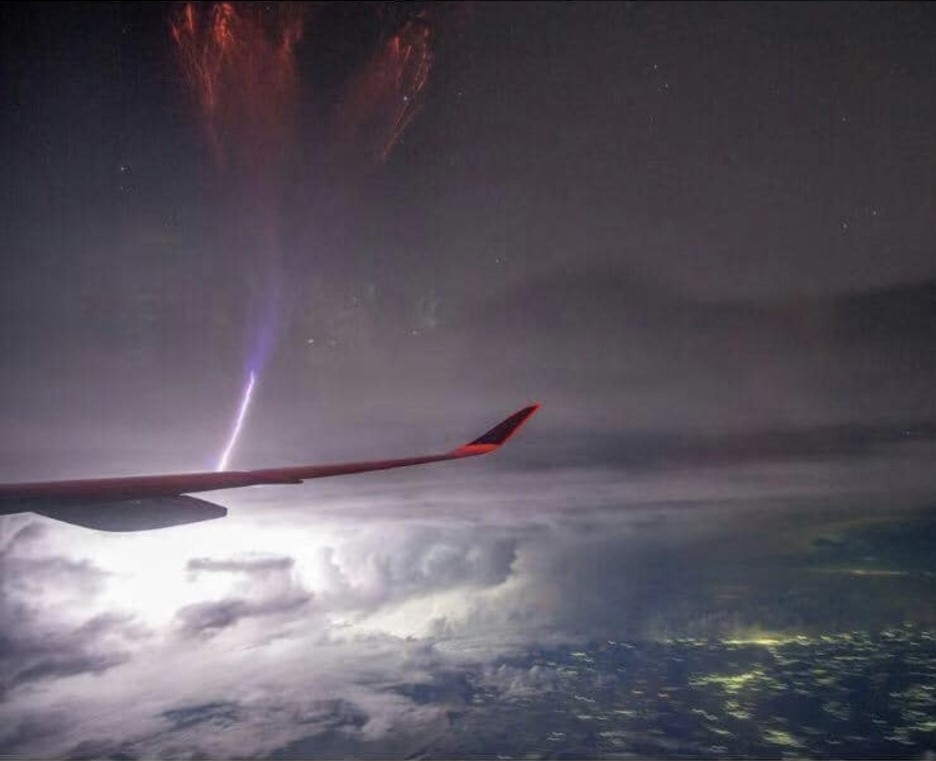Understanding of Aircraft Interaction with Lightning and Thunderclouds
A special issue of Atmosphere (ISSN 2073-4433). This special issue belongs to the section "Meteorology".
Deadline for manuscript submissions: closed (6 May 2022) | Viewed by 24521
Special Issue Editor
Interests: atmospheric electricity; lightning; Terrestrial Gamma-Ray Flashes (TGFs); Long Gamma-Ray Glows; long laboratory sparks; lightning interaction with aircraft
Special Issues, Collections and Topics in MDPI journals
Special Issue Information
Dear Colleagues,
The Special Issue on aircraft interaction with lightning and thunderclouds is dedicated to attracting scientific attention to:
- The phenomenon of lightning strikes to airplanes, helicopters, drones, and everything that is flying and will soon be flying in the atmosphere;
- Understanding of possible effects of thundercloud-related radiation on the aircraft.
Generally, lightning is not considered a major threat to modern aviation. Aircraft are built and tested to withstand severe lightning impacts and have been demonstrated to be a safe and reliable way of transportation. A commercial aircraft in the Northern hemisphere is hit by lightning on average once a year. Despite financial losses for the airliner and frustration for the passengers, such events are usually manageable and cause no dramatic issues. However, this may change in the future.
The current level of air transportation is environmentally unsustainable. The boom of low-cost airliners and humanity wealth growth have already made air travel a bigger contributor to climate change than automobiles. In addition, several thousand new airplanes will be built soon to satisfy the demand from rapidly growing economies in Asia and Africa. The pressure imposed on the aviation industry by climate change will inevitably make us reconsider the way we build and operate aircraft, including the way we protect new aircraft in severe weather environments.
The use of advanced materials, technological progress in batteries, and hydrogen-powered generators is the way to sustainable aviation. As always, science will help and support the aviation industry on its way to this change.
On the other hand, recent advancements in our understanding of lightning and discovery of new atmospheric phenomena originating in thunderclouds have created new challenges that need to be addressed. Lightning is known to generate bursts of X-ray radiation during its propagation. Thunderclouds are considered to be natural particle accelerators and in fact can produce very high energy bursts of hard radiation known as terrestrial gamma-ray flashes at as low as 10 km altitude. New types of atmospheric discharges were recently discovered above thunderclouds, where airplanes were always considered to be safe. We need to understand the possible effects of long-lasting gamma-ray glows produced by thunderclouds on air transportation. Finally, a recent remarkable discovery of positron annihilation in the vicinity of a regular passenger airplane highlights the complexity and importance of the topic.
In this Special Issue of Atmosphere, we invite scientists and researchers from R&D departments to join our efforts in advancing our understanding of aircraft interaction with lightning and thunderclouds. In-flight experimental campaigns, laboratory research, and modeling on the topics described above are highly appreciated and welcomed.

Dr. Pavlo Kochkin
Guest Editor
Manuscript Submission Information
Manuscripts should be submitted online at www.mdpi.com by registering and logging in to this website. Once you are registered, click here to go to the submission form. Manuscripts can be submitted until the deadline. All submissions that pass pre-check are peer-reviewed. Accepted papers will be published continuously in the journal (as soon as accepted) and will be listed together on the special issue website. Research articles, review articles as well as short communications are invited. For planned papers, a title and short abstract (about 250 words) can be sent to the Editorial Office for assessment.
Submitted manuscripts should not have been published previously, nor be under consideration for publication elsewhere (except conference proceedings papers). All manuscripts are thoroughly refereed through a single-blind peer-review process. A guide for authors and other relevant information for submission of manuscripts is available on the Instructions for Authors page. Atmosphere is an international peer-reviewed open access monthly journal published by MDPI.
Please visit the Instructions for Authors page before submitting a manuscript. The Article Processing Charge (APC) for publication in this open access journal is 2400 CHF (Swiss Francs). Submitted papers should be well formatted and use good English. Authors may use MDPI's English editing service prior to publication or during author revisions.
Keywords
- lightning
- aircraft
- atmospheric discharges
- long gamma-ray glows
- terrestrial gamma-ray flashes
Benefits of Publishing in a Special Issue
- Ease of navigation: Grouping papers by topic helps scholars navigate broad scope journals more efficiently.
- Greater discoverability: Special Issues support the reach and impact of scientific research. Articles in Special Issues are more discoverable and cited more frequently.
- Expansion of research network: Special Issues facilitate connections among authors, fostering scientific collaborations.
- External promotion: Articles in Special Issues are often promoted through the journal's social media, increasing their visibility.
- Reprint: MDPI Books provides the opportunity to republish successful Special Issues in book format, both online and in print.
Further information on MDPI's Special Issue policies can be found here.





